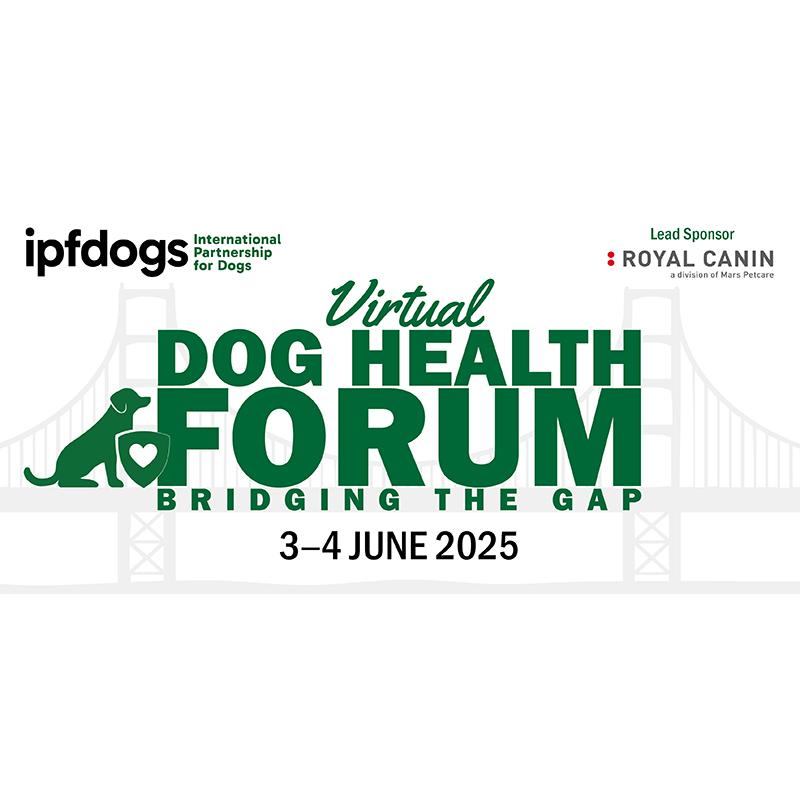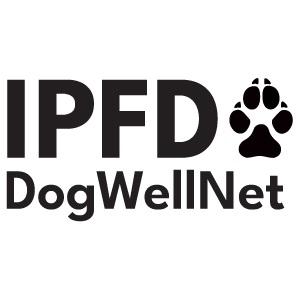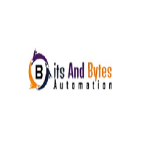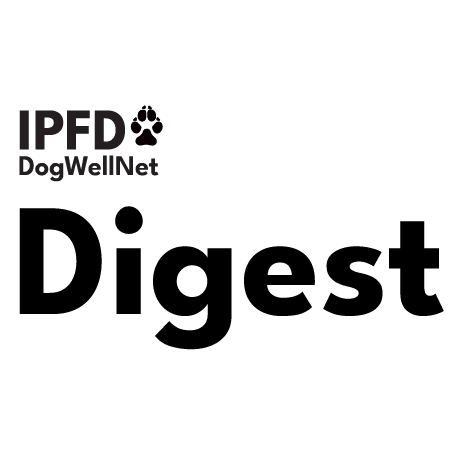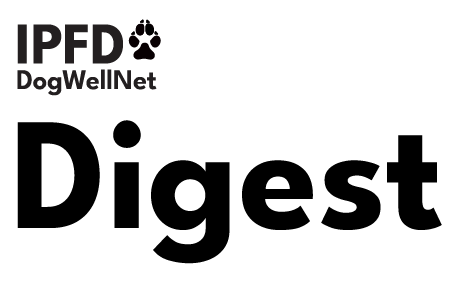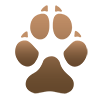All Activity
- Earlier
-
朱迅 joined the community
-
3mnity 3 changed their profile photo
-
Rolf Gullik Sarre joined the community
-
Jessica Johnson rud joined the community
-
CRISTINA joined the community
-
Tish Barker joined the community
-
Monica A joined the community
-
Susanne H. Engdahl joined the community
-
Elisa Kivelä changed their profile photo
-
Oona Huhtanen changed their profile photo
-
I was thrilled to receive an invitation last fall to deliver two workshop talks at the 2025 AKC Canine Health Foundation National Parent Club Canine Health Conference. This was the 30th year celebration for CHF, and the event did not disappoint. Dozens of keynote and workshop talks were provided to the more than 200 attendees from across the veterinary, research, and breed club spectrum. As a first-time attendee, I felt privileged to contribute to the event and introduce the International Partnership for Dogs and our resources on DogWellNet.com to this important North American audience. There were many friendly faces present, including several of our previous International Dog Health Workshop speakers, our friends at the Orthopedic Foundation for Animals, and new friends at the AKC Canine Health Foundation. While the official theme may have been “Science for Health, Vibrant Dogs”, it felt like the unofficial theme was “Making Connections with Dedicated and Motivated Dog People”, who truly care about supporting science and research that is impactful and meaningful to dogs. The display table kindly furnished by CHF was extremely helpful in highlighting IPFD’s presence at the conference and served as a ‘home base’ for networking between the sessions. And congratulations to the winners of our draw for two bags of Silver Falls gourmet coffee, made in my home state of Oregon! All of the featured talks were provided by researchers that had received grant support from CHF and ran the spectrum of interests, including investigating specific diseases, veterinary care and techniques, parasites and non-inherited disease, and behavioral training. The breakout sessions focused on audience-specific learning, and my presentations to both the veterinary and breeder streams had two goals: 1) To demonstrate the value of IPFD’s tools, resources, and broad international community 2) To highlight IPFD’s role as a leader in collaborative efforts to enhance dog health and well-being on both sides of the Atlantic and around the world. I cannot thank the entire CHF team enough for their generosity and support in welcoming me and IPFD to the conference. I look forward to the next steps in strengthening our relationships with CHF and the North American dog community!
-
- akc-chf
- canine health foundation
-
(and 2 more)
Tagged with:
-
IPFD has published a report that outlines discussions and action items for improving dog health and well-being from its first-ever Virtual Dog Health Forum in June 2025. Click below to download the report or scroll down for additional details on the Virtual Forum and International Dog Health Workshops. . Virtual Dog Health Forum 2025 Report FINAL.pdf
-
Kathleen Smiler changed their profile photo
-
Natalie Miron changed their profile photo
-
-
- dog health workshop
- fci
- (and 9 more)
-
Irene Berglund started following Breeding and Genetics
-
cbeuchat started following 5th IDHW - Schedule
-
agrestal changed their profile photo
-
Monica Benelli changed their profile photo
-
Lauren CS started following Newfoundland
-
Lisa de Graaf started following Labrador Retriever
-
A new report published in the peer-reviewed journal, Companion Animal Health and Genetics, outlines discussions and action items for improving dog health and well-being from the 5th International Dog Health Workshop, co-hosted by the International Partnership for Dogs (IPFD) and the Finnish Kennel Club (Suomen Kennelliitto) in Finland in June 2024. Moving from information and collaboration to action: Report from the 5th International Dog Health Workshop in Helsinki, June 2024 Katariina Mäki1, Aimée Llewellyn-Zaidi2, David St. Louis3, Marc Ralsky4, Dan G. O’Neill5, Åke Hedhammar6, Rowena M.A. Packer7, Kari J. Ekenstedt8, Jerold S. Bell9, Becky Murphy10, Ian J. Seath11, Ambre Courtin12, Mirkka Montonen13, Anna Nygård14, Vilma Reunanen15 Companion Animal Health and Genetics volume 12, Article number: 2 (2025) Link to Report | Download Report as PDF
-

Breed-Specific Questions, Answers, Tools and Resources
Aimee Llewellyn-Zaidi commented on Ann Milligan's article in Breed-Specific Health Reports
The prevelance of NCL8 mutations in English Setter populations globally, is unknown. In part, this is due to there not being a centralised database collecting this information, or depending on the country, any collation of genetic or health test results. With panel testing being a common form of genetic testing, having all the possible (e.g. rare) variants included mean we might in future have a bit more information on the frequency of mutation and any impacts breeding strategies may have. As for why some countries include this test, it is typically down to input from the national breed clubs, researchers/veterinary advisors, test availability, and disease risk/severity. The breed relevance ratings IPFD uses is based on the availability of breed-specific research that indicates the variant being tested for is causal for the disease, not on it being "recommended" as that can vary depending on a number of population-specific factors.- 2 comments
-
- breeding dogs
- owners
- (and 14 more)
-
Jane Burrows started following Breed-Specific Questions, Answers, Tools and Resources
-

Breed-Specific Questions, Answers, Tools and Resources
Jane Burrows commented on Ann Milligan's article in Breed-Specific Health Reports
Has Neuronal Ceroid Lipofuscinosis been detected in the English Setter population outside of a laboratory colony since the test for NCL8 was developed in 2014? I'm well aware of the history of the disease which was first discovered in Norway in the 1950's, but after more than 40 years of having English Setters in the USA, I've never heard of a case in my breed here. The test for NCL8 is available from a few American labs, but I think I'm one of the few who has used it (with Normal results from a dog with an imported sire having several Norwegian ancestors). In contrast, a number of European clubs either require or recommend the NCL8 test. What is the current status of this disease? Jane Burrows- 2 comments
-
- breeding dogs
- owners
- (and 14 more)
-
Pets At Play changed their profile photo
-
Martin Olsen changed their profile photo
-
Bits and bytes automation changed their profile photo
-
Ingunn Nilssen started following Overview: 5th International Dog Health Workshop (IDHW)
-

Get a GRIHP! on Labrador Retrievers
Katariina Mäki commented on Katariina Mäki's article in Breed-Specific Health Reports
I looked at ours and OMIA database and it seems that the mode of inheritance as autosomal dominant with incomplete penetrance has been reported in Doberman Pinscher and Kromfohrländer. In other breeds a recessive mode of inheritance has been proposed. In a study by Donner et al. (2023) they say: The most common disease-associated variants observed in the present study expectedly included some known genetically widespread variants that are also frequently requested targets for genetic screening, such as DM, CEA, prcd-PRA, HUU, exercise-induced collapse (EIC), MDR1 (multidrug resistance 1) medication sensitivity, and von Willebrand’s disease type 1 (vWD 1) [18–21, 55–57]. Despite extensive genetic testing for these variants, challenges in determining and understanding their penetrance and expressivity in different breed backgrounds partially persist, as exemplified by phenotype studies of dogs genetically at risk of DM, CEA, and cone-rod dystrophy (cord1-PRA/crd4) [58–60]. For these and other variants, there are potentially unidentified genetic risk and age of onset modifiers that blur a clear Mendelian inheritance pattern. It can also be particularly difficult to interpret what role in the regulation of disease onset is played by variants originally published based on study of a subset of the canine population, or with limited functional evidence supporting causality. So some research would be needed to be sure. There has been some recent research in Feragen, for example - maybe you could ask them if you could send them samples? They published this paper: vWDI is inherited in an autosomal dominant manner with incomplete penetrance, in the Kromfohrländer breed- 6 comments
-
- labrador retriever
- get a grihp
-
(and 2 more)
Tagged with:
-

Get a GRIHP! on Labrador Retrievers
Jane E EVANS commented on Katariina Mäki's article in Breed-Specific Health Reports
Our breed, as well as many other breeds, are affected by vWB type1. There are differing references by Universities & DNA testing companies as to if vWB1's inheritance is AUTOSOMNAL RECESSIVE with incomplete penetrance or AUTOSOMNAL DOMINANT with incomplete penetrance? This leaves breeders in a quandary as to which statement is correct. This problem needs to be defined, giving breeders the answer to the question of RECESSIVE or DOMINANT mode? Is this something which DWN could help with? Perhaps you know a researcher who is, or would like to be, working on this important dilemma? Thank you for your consideration of this. Jane Evans, SOUTH AUSTRALIA- 6 comments
-
- labrador retriever
- get a grihp
-
(and 2 more)
Tagged with:
-

Get a GRIHP! on Labrador Retrievers
Katariina Mäki commented on Katariina Mäki's article in Breed-Specific Health Reports
Sure - I'll add your breed to the list. Thank you for your active participation, we really appreciate it!- 6 comments
-
- labrador retriever
- get a grihp
-
(and 2 more)
Tagged with:
-

Get a GRIHP! on Labrador Retrievers
Jane E EVANS commented on Katariina Mäki's article in Breed-Specific Health Reports
Thank you so much Katariina. My breed is EPAGNEUL NAIN CONTINENTAL (CONTINENTAL TOY SPANIEL) & has 2 varieties; Papillon with erect ears & Phalène with drop ears. To have them on the 2026 list would be wonderful. Is this possible please. I maintain the Archive here in Australia & have good historical references & can ask George Sofrinidis at ORIVET here for DNA data for our breed.- 6 comments
-
- labrador retriever
- get a grihp
-
(and 2 more)
Tagged with:
-

Get a GRIHP! on Labrador Retrievers
Katariina Mäki commented on Katariina Mäki's article in Breed-Specific Health Reports
Thank you, Jane! We welcome breed suggestions. It's always easier to put together an article like this about a breed when enthusiasts provide us with information and links about the health and welfare of the breed! This year's breed list is full, but we can add new breeds to next year's list.- 6 comments
-
- labrador retriever
- get a grihp
-
(and 2 more)
Tagged with:
-
Jane E EVANS started following Get a GRIHP! on Labrador Retrievers
-

Get a GRIHP! on Labrador Retrievers
Jane E EVANS commented on Katariina Mäki's article in Breed-Specific Health Reports
Absolutely excellent initiative. Thank you. How do we initiate our own breeds to be a part of this terrific system?- 6 comments
-
- labrador retriever
- get a grihp
-
(and 2 more)
Tagged with:
-
I attended the Fédération Cynologique Internationale (FCI) online conference on the illegal puppy trade on 4 February. The conference program included a slate of expert speakers who addressed various aspects of this important issue. Educate the buyers – Without demand, there’s no supply In their opening speeches, Dr. Tamás Jakkel (FCI President) and Jørgen Hindse (President of the FCI European Section) emphasised the need for cooperation between different stakeholders in this area. Dr. Jakkel also emphasised that the two most important steps in dog breeding are: 1) deciding which female and male should produce a litter together, and 2) finding the right homes for the puppies, as puppies in suitable homes rarely end up homeless. Jørgen Hindse pointed out that only 14% of dogs in the EU are FCI registered pedigree dogs, and yet FCI breeders are most often blamed for animal welfare problems. Hindse stressed that it is important for the puppy buyer to see the mother and the conditions in which the puppies are reared. This is not possible in puppy mills. He welcomed the new EU law requiring all dogs to have identification and concluded that the key to eliminating puppy mills is to educate puppy buyers. Without demand, there's no supply. Four Paws calls for three important EU actions Nick Weston (Head of International Campaigns, FOUR PAWS) gave an overview of the illegal puppy trade in the EU. Among the points he highlighted: There is an annual demand for 5.99 million puppies. The value of the annual dog trade is 4.6 billion euros. 79% of dogs come from unknown or illegal sources. 2000 new advertisements for dogs are placed daily on classifieds websites. Traceability of sellers is weak. In 2021, the EU recognised the illegal puppy trade as organised crime. These figures are taken from FOUR PAWS's excellent report, 'Billion Euro Industry - Why the EU must strengthen regulations to end the illegal puppy trade now'. The 50-page report includes nine supporting documents. It is the most comprehensive look at the puppy trade currently available. Weston said no one is safe from illegal puppy traders. Most people don't know about the poor welfare conditions in this business – or they do know, but they want to rescue/save the puppy. It is a perfect business model for the criminals: people will buy anyway. This is high-risk consumer behaviour: people want to buy a puppy NOW, no matter the consequences. Harmonised legislation is needed to tackle the illegal trade in the EU. FOUR PAWS is calling for three actions: Mandatory identification and registration of all dogs and cats Classified ad sites to use a registration verification system for puppy ads (Veripet) Improved interoperability of databases so that every dog in the EU can be traced throughout its life. These actions should also be extended to social media groups. Four Paws has met with Meta, which is taking this issue seriously. What everyone can do: Contact the AGRI Committee (via FOUR PAWS: Regulate the EU Puppy Trade Now) Raise awareness: inform your members, inform the media Encourage your MEPs to vote – dog and cat welfare legislation will be voted on this summer. Three presentations on welfare issues and health risks The presentations on welfare issues and health risks included: Dr. Gabriella Markus (Veterinarians for Animal Welfare Foundation, The Bojtár Association – Animal Guardian Legal Aid Helpline): Welfare issues and struggles in the “producing” countries, Dr. Lilla Balatonyi (clinical veterinarian): Health risks of being born on a puppy farm, and Dr. Ágnes Sátori (veterinary behaviourist): Future behavioural problems of puppies coming from illegal trade. All three presentations were very thought provoking, and they underscored the need to stop the illegal puppy mills immediately…to end all the suffering they cause. In puppy mills, there's no expertise, no genetic testing, no vaccinations/antiparasitics or other treatments, and no love for the animals. And there are also many ‘rescue’ organisations and shelters that are in fact, puppy mills. Some of the things that stuck in my mind from these three presentations: Suffering of the bitches Puppy mill bitches don't know human touch – they are only touched twice a year when they are mated. They have a general fear of people. They don't go for walks, don't get to see and feel the sun, don't hear normal environmental sounds like birds and other animals. They must live with constant environmental noise and fear, so their stress levels are high. They have a litter every six months and are abandoned as soon as they are no longer needed. The size of the male is not considered in matings, so the puppies are often too large to be born naturally. Signs of botched caesareans and non-veterinary episiotomies are common, and these often kill the mother and sometimes the puppies too. Debarking is common, to make the dogs silent. Many health problems from poor nutrition Both bitches and puppies are in poor condition due to poor nutrition and environment. As a result, the mother's milk does not contain antibodies against the major pathogens. Puppies have parasites and viral diseases, and because they are not vaccinated even against rabies, they pose a risk to humans. Misuse of antibiotics is wide – to mask infections at the time of sale. Poor maternal nutrition leads to impaired foetal gastrointestinal development, which results in puppies having problems absorbing nutrients. Poor nutrition also causes microbiome dysbiosis, which results in chronic diarrhoea and other gastrointestinal problems. Poor nutrition causes also underdevelopment of the nervous system and brain biochemistry. This results in defective production of hormones, such as serotonin, so puppies cannot control their emotions, for instance. Behavioural problems and genetic diseases Many behavioural problems are the result of poor conditions/nutrition and epigenetic mechanisms. In addition, puppies are born with genetic diseases such as hydrocephalus, blindness, deafness, and patellar luxation. This is due to the breeders’ lack of knowledge or ignorance of genetic problems. Puppy mills in Hungary Dr Gabriella Markus described the puppy mills in Hungary, where puppy farming has a long tradition. It's considered, by some, better for people to earn money this way than to do nothing and be on welfare. The dogs are fed twice a day and that's about all the care they get. The food is of poor quality, unsuitable for dogs and normal puppy development. The primary reason for this poor care is a lack of knowledge. There is a licensing system for breeders, but it’s useless for monitoring animal welfare because registering is as easy as opening an account on eBay. The police have no money to investigate suspected animal cruelty so that the criminals can be convicted. Only the victims can appeal the cases, but the victim in this case is an animal... It is so easy to run an illegal puppy mill in Hungary that people move their business there if they are caught in their own country. Buyers want puppies as young as possible Pet shops and buyers want puppies as young as possible. However, the rabies vaccine cannot be given until the puppy is 12 weeks old, so documents are falsified. Some veterinarians rubber-stamp vaccination certificates, which puppy mill owners fill in with other information – and the puppy remains unvaccinated. Outbreaks of rabies have occurred in Romania, Poland, and Hungary in recent years, so this is a real threat to humans. A new trend to circumvent the rules is to search for 1- to 6-year-old bitches in secret Whatsapp and other social media groups. The bitches are mated and transported pregnant into puppy mills, under non-commercial transport status. The resulting puppies are untraceable. The objectives of the EU to tackle the illegal dog trade Lucie Carrouée (DG SANTE, Deputy Head of Unit, Unit G3 – Animal welfare) and Alicja Muznik (Policy officer, DG SANTE, Unit G5 – Food hygiene, feed and fraud) talked about ‘The objectives of the EU to tackle the illegal dog trade’. Lucie Carrouée and Alicja Muznik work in the Commission's Health and Food Safety department, which is responsible for EU policy on food safety and health and for monitoring the implementation of related legislation. They highlighted several challenges, such as Commercial activities disguised as non-commercial Falsified vaccination documents Animals from Russia and Belarus sold as EU pets to unknown recipients in the EU using Polish, Latvian, and Estonian transporters Falsified EU pet passports Illegal breeding and import of animals by Romanian associations The EU is tackling these activities with tools such as direct contact points for the pet trade, regular task force meetings and information exchange, and the involvement of police and prosecutors. A traceability infrastructure has been planned for the proposed EU legislation on the welfare of dogs and cats, including interoperability between national databases and a verification system for dog and cat advertisements. Sellers will have to provide specific information in advertisements, such as the sex, date of birth, country of birth, and breed of the animal in question. They will also have to provide the buyer with information on responsible ownership and a link to the verification system where the buyer can check the identification and registration of the puppy. FCI survey on cultural differences and human tendencies affecting the illegal puppy trade The last talk was, ‘Cultural differences and human tendencies affecting the illegal puppy trade based on the FCI Survey’, given by Attila Márton (FCI PR Advisor, member of the FCI Health & Welfare Committee). The talk included interesting results of the FCI survey, which will be published soon. Video recordings of the talks FCI has begun posting videos of the talks - available here. My Closing Thoughts – Opportunities for Collaboration I wholeheartedly agree with Dr. Jakkel on the need for cooperation in ending the illegal puppy trade. And it’s important to note that this issue extends far beyond the EU – into North America and elsewhere around the world. IPFD and decision-makers from the global dog community have been addressing the issue of supply and demand within a recurring theme at our International Dog Health Workshops (IDHWs). Below are links to related materials from the 5th IDHW, held last year in Helsinki: Supply and Demand: Theme Overview 5th IDHW Presentations 5th IDHW Theme Outcomes I would encourage FCI and FOUR PAWS – and all organisations and leaders who recognise the importance and power of international collaboration – to take part in IPFD’s ongoing discussions and make plans to join us at our 6th IDHW in Bologna, Italy, in the spring of 2026. We’re always available and ready to discuss collaborative solutions to issues that affect canine health and well-being. We welcome you to connect with us at katariina.maki@ipfdogs.com or info@ipfdogs.com.
-

Get a GRIHP! on Labrador Retrievers
Katariina Mäki posted a article in Breed-Specific Health Reports
This article on Labrador Retrievers is part of a series to highlight the Big Picture of health, welfare and breeding and to help develop Globally Relevant Integrated Health Profiles (GRIHPs) for many breeds. See IPFD's Get a GRIHP! on Breed Health Initiative This is a 'living document' - so if anyone has more material to share or point us to - please let us know! (Photo: Daniel Albany / Pixabay)- 6 comments
-
- labrador retriever
- get a grihp
-
(and 2 more)
Tagged with:
-
-

Horizon Topic paper: A new future for dog breeding
Katariina Mäki posted a blog entry in New Research
Helle Friis Proschowsky, from the Department of Veterinary and Animal Sciences at Copenhagen University, has just published a Horizon Topic paper with Maja Arendt, Brenda Bonnett, Camilla Bruun, Irena Czycholl, Merete Fredholm, Dan O'Neill, James Serpell, and Peter Sandøe. The title of the paper is "A new future for dog breeding". The paper presents a review of modern dog breeding, outlining the current situation and suggesting improvements to enhance the health and welfare of dogs in the future. The authors view this paper as a call to action, providing a framework for driving meaningful change. Overview of the Current Situation The authors begin with an overview of the current situation: The modern idea of purebred dogs has come under increasing critical scrutiny in recent decades. In light of this critical focus and other developments in society, new trends in how companion dogs are bred and acquired have emerged. This means a diminishing influence from traditional kennel clubs – with more dogs being sold without a pedigree, stricter legal restrictions on dog breeding, growing popularity of deliberate crosses of established breeds (i.e., so-called 'designer breeds'), and growing hype around the benefits of mixed-breed dogs. They then provide an overview of these trends and discuss the extent to which they will facilitate the promotion of dogs that are innately healthy, enjoy good welfare, and function well in their various roles in today's world. The authors contend that newly created designer breeds and mixed breeds also exhibit concerning health and behavioural issues. They posit that the predictability of purebred dogs with respect to body size, fundamental behaviours, known grooming requirements, disorder profiles, and other attributes may confer benefits for a mutually satisfying human-dog relationship. What Would Be the Solutions? The optimal future seems to lie in the middle ground, the authors state. The future organised dog world (i.e., kennel and breed clubs or their successor organisations) will need to: re-open the breed registries remove wording from breed standards that currently promotes extreme conformation support selection against disease-predisposing genotypes and phenotypes, and refocus dog showing and breeding to promote health and appropriate behaviour IPFD 5th International Dog Health Workshop Discussed These Same Issues Discussions on this subject also took place at IPFD’s 5th International Dog Health Workshop in June 2024. There was widespread agreement on moving away from extreme conformation and inbreeding, and towards accepting crossbreeding as a legitimate tool for breeders – as well as towards following scientific evidence on canine genetics and health. It was agreed that these principles should become priorities for welfare-minded organisations at the national and international levels. A better education of puppy buyers, breeders, show judges, and other stakeholders was identified as a recurring priority across all four workshop themes. Read the Horizon Paper View/Download the Horizon Paper Here-
- breeding
- crossbreeding
- (and 7 more)
-
International Dog Health Workshops
Decision leaders from major stakeholders moving from information to action.Post-Meeting Resources
Plenary talks, Posters & outcomes -
IPFD Newsletter
News and updates from DogWellNet: Breed of the Month, latest blogs, IPFD Partners in Action, Spotlight feature on key issues, and more. View the latest Digest
-
-
Latest Posts
-
By Dave St. Louis · Posted
DogWellNet Members with Website Editor responsibilities can access additional help with posting content in the Website Editors' Forum (accessible by Advanced Members only). -
By Dave St. Louis · Posted
Before you post a question in the Help Desk Forum, please visit our Help Desk Database to see if we've already posted information that will help solve your issue. Note: You can access the Help Desk Database by clicking the ? Help Desk link in the top-right corner of any page on this site. We include the following Categories in the Help Desk Database: Quick Start Tips for getting started on DogWellNet Your Account Information on: Registration; Setting up your personal profile, notifications, settings, etc. Navigation Includes directions to: Key Areas/Features; What is visible/available to guests and various membership categories; Search functions and tips Participating in the Community Reporting broken links, missing pages, permissions etc. Using the DogWellNet Forums Helpful tips for participating in our Forums Technical Issues Reporting broken links, missing pages, permissions etc. Contributor Resources Tips for Members who post content -
By Dave St. Louis · Posted
Usage Guidelines for IPFD / DogWellNet LogosGuidelines for using the logos and links to image files are available in the Help Desk section. Need Help?If you have any questions about the use or technical aspects of the IPFD and DogWellNet logos, please contact us at info@ipfdogs.com.
-
-
Latest Topics
-
Latest Blogs
-
Latest Files
-
 Donate
Donate








